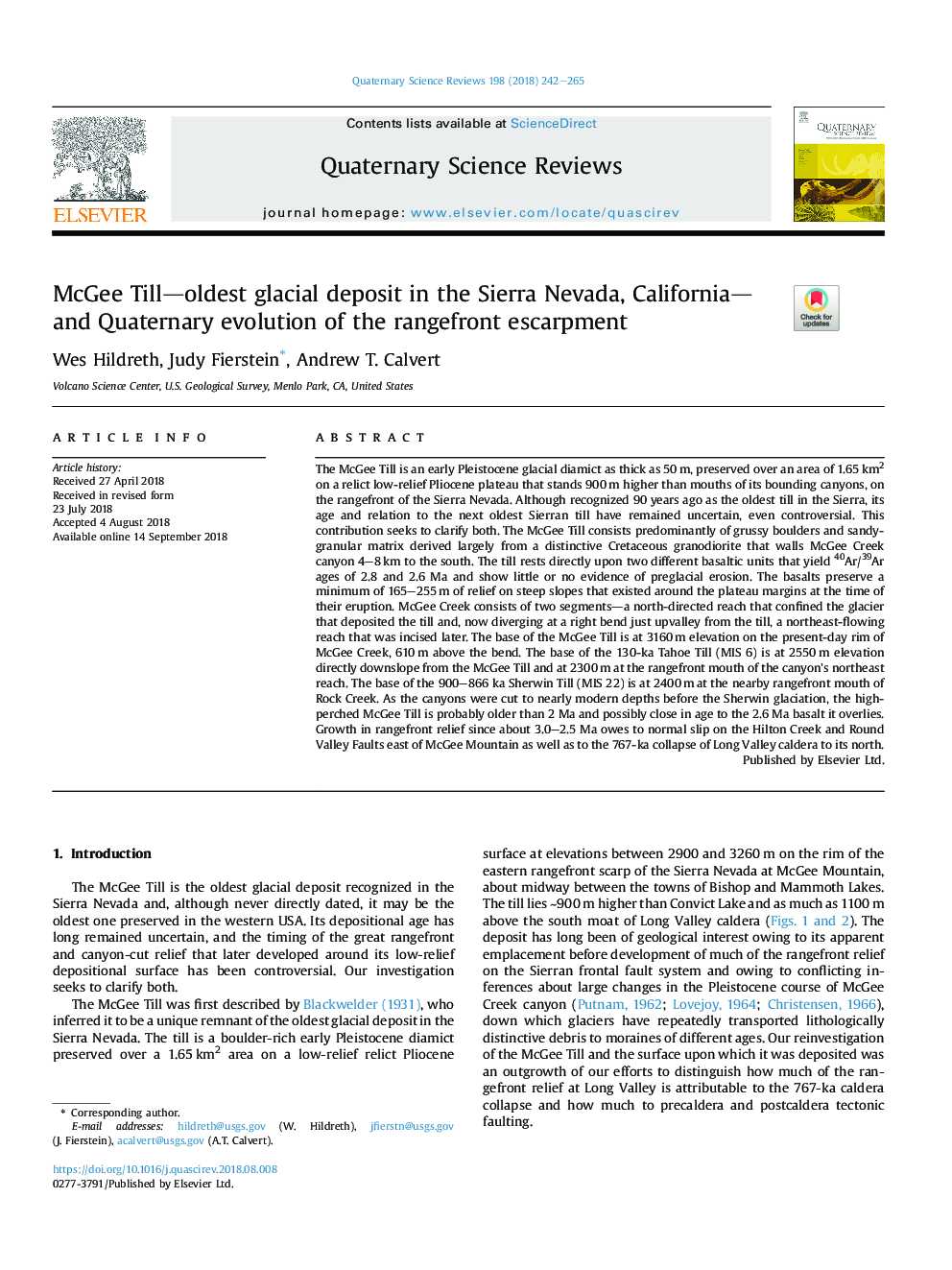| Article ID | Journal | Published Year | Pages | File Type |
|---|---|---|---|---|
| 11028494 | Quaternary Science Reviews | 2018 | 24 Pages |
Abstract
The McGee Till is an early Pleistocene glacial diamict as thick as 50â¯m, preserved over an area of 1.65â¯km2 on a relict low-relief Pliocene plateau that stands 900â¯m higher than mouths of its bounding canyons, on the rangefront of the Sierra Nevada. Although recognized 90 years ago as the oldest till in the Sierra, its age and relation to the next oldest Sierran till have remained uncertain, even controversial. This contribution seeks to clarify both. The McGee Till consists predominantly of grussy boulders and sandy-granular matrix derived largely from a distinctive Cretaceous granodiorite that walls McGee Creek canyon 4-8â¯km to the south. The till rests directly upon two different basaltic units that yield 40Ar/39Ar ages of 2.8 and 2.6 Ma and show little or no evidence of preglacial erosion. The basalts preserve a minimum of 165-255â¯m of relief on steep slopes that existed around the plateau margins at the time of their eruption. McGee Creek consists of two segments-a north-directed reach that confined the glacier that deposited the till and, now diverging at a right bend just upvalley from the till, a northeast-flowing reach that was incised later. The base of the McGee Till is at 3160â¯m elevation on the present-day rim of McGee Creek, 610â¯m above the bend. The base of the 130-ka Tahoe Till (MIS 6) is at 2550â¯m elevation directly downslope from the McGee Till and at 2300â¯mâ¯at the rangefront mouth of the canyon's northeast reach. The base of the 900-866 ka Sherwin Till (MIS 22) is at 2400â¯mâ¯at the nearby rangefront mouth of Rock Creek. As the canyons were cut to nearly modern depths before the Sherwin glaciation, the high-perched McGee Till is probably older than 2 Ma and possibly close in age to the 2.6 Ma basalt it overlies. Growth in rangefront relief since about 3.0-2.5 Ma owes to normal slip on the Hilton Creek and Round Valley Faults east of McGee Mountain as well as to the 767-ka collapse of Long Valley caldera to its north.
Related Topics
Physical Sciences and Engineering
Earth and Planetary Sciences
Geology
Authors
Wes Hildreth, Judy Fierstein, Andrew T. Calvert,
